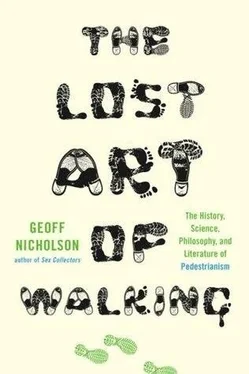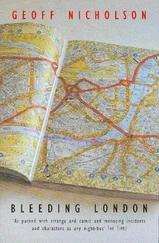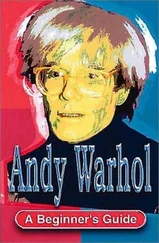It had occurred to me that Iain Sinclair might invite me to go with him on one of his fifty or so routes. I thought it might make for good, if again well-trodden, material. He didn’t, but I did do one short walk with Iain Sinclair. It wasn’t arduous, and as far as I can tell it was devoid of secret histories and alternate mythologies, although you can never be sure about these things. Our walk together was about twenty feet in length, the distance from his front door to his front gate, from his house along his garden path to the street. Being a good host, he saw me all the way out, escorted me off the premises. This, unarguably, was a walk through Iain Sinclair’s London.
♦
I was left wondering which particular endlessly strange walking project of my own I should be doing in London. I tried to envisage a map that showed every step I’d ever taken in the city — from my first visit with my parents when I was eleven years old, then all the visits I’d made when I was a student, thinking myself pretty cool to have friends, even a girlfriend, in London.
Then, as soon as I got out of college, I went to live in London, and began a period of twenty years or so living in one grim, unsatisfactory place after another, all over the map: Notting Hill, Shepherd’s Bush, Stamford Hill, Hendon, Baker Street, Greenwich, Bloomsbury, West Hampstead, Earls Court, West Ham. Eventually, and for the longest time, I lived in a small flat in Maida Vale that I wanted to move out of the day I moved in, and managed it just over twelve years later. I contemplated doing a pilgrimage walk around all these places where I’d lived, but it would have taken forever, and why would I want to depress myself?
Like Iain Sinclair, I had a certain number of set London walks, and I liked to think that over the years these had got more eccentric and sophisticated, more full of the connoisseurship of walking and London. Some of them were straightforward enough, various walks along and across and under the Thames, various walks that enabled me to watch the endless, cyclical destruction and reconstruction of London. Some were more consciously obscure: a walk to the six-hundred-year-old Whitechapel Bell Foundry — a stroll along Lombard Street to see where Alexander Pope, Aubrey Beardsley, T.S. Eliot, and Charles Dickens’s first love, Maria Beadnell, had all lived at one time or another; an expedition to see the King’s Place Nunneries — exclusive, expensive, eighteenth-century brothels, the best of them run by a woman from Guinea known as Black Harriott.
Sometimes I just took a shot in the dark. An afternoon spent on the green, cheerless expanse that is Wanstead Flats wasn’t one of the great walks, but it took me to a place I’d never been before, and will most likely never go again: the Hornimann Museum — the home of stuffed critters and primitive musical instruments — was wonderful, and I promised myself I’d definitely go back, but so far I never have.
I had a brief obsession with a book on architecture, written by Charles Jencks, called Post-Modern Triumphs in London . I spent quite a few Sunday afternoons walking around looking at new buildings that were all faux this and high-tech that, and saying to my walking pals, ‘Well yes, it is postmodern, but is it a triumph?’
I discovered that a high percentage of the buildings I liked were designed by a company called CZWG. These included The Circle, a curved block, finished in purple-and-blue-glazed bricks — Cascades, an apartment building on the Isle of Dogs, twenty stories high, one side of it stepped, providing a stack of ‘penthouses’ — the Janet Street-Porter House in Smithfield, a conglomeration of odd-shaped windows, balconies, metal grids, and four colors of brick. Janet Street-Porter, incidentally, remains a famous English walker, and was for a while vice president of the Ramblers’ Association.
The G in CZWG belongs to Piers Gough, a tall, skinny, angular Beardsleyesque character with quite a public profile in England as a champion of postmodern architecture. Newspapers and magazines describe him as ‘flamboyant’ and note that he’s an advisor to Frank Gehry.
I met Piers Gough at a party in London. By then I had become interested in people who had difficulty walking, but I had no idea that Gough fit into this category. None of the cuttings I’d read about him ever mentioned that he’s seriously disabled.
At the party I saw that he had terrible trouble getting around. In order to cross the room he had to make a series of lurches using tables, sofas, sometimes the walls, to support and propel himself. His legs pointed inward asymmetrically, and his feet, which splayed outward, were encased in special black leather shoes that were oddly stylish and almost semi-circular in plan.
We happened to be leaving at the same time, and he offered me a lift: his legs worked well enough to allow him to drive an automatic car. As we walked the couple of hundred yards to his Saab, I saw that he walked more easily in the street than he had indoors. The lurches I’d seen were his attempts to launch himself: once he was in motion he could keep going. He also used a walking stick, one specially made for him from transparent Perspex. With the long black raincoat he was wearing, he cut an elegantly ruined figure.
I said I was writing a book about walking, and would he mind if I asked him a few questions. He graciously said he didn’t mind. He’d been on a building site, he told me, and had fallen, not very far, about ten feet, but it had been enough to break his spine. That had been thirty years ago, when he was thirty. He’d been living with the disability for half his life. His wasn’t a typical spinal injury, he said. In some ways he’d been lucky. Most people with a broken spine are completely paralyzed below the point of the break, but he wasn’t; otherwise, he wouldn’t have been able to walk at all.
I asked whether the condition was stable, whether it was getting worse, whether it could be improved somehow. He said it was only getting worse in the way that everything gets worse with age. And he had to do exercises to prevent deterioration. He went to the gym and went swimming.
What about walking, I asked. I had the notion that this might be a man who could walk only with great difficulty but who needed to continue to walk in order to improve his condition.
My notion was quickly destroyed. Cough had done enough walking in his life, he said. When he was growing up, his father had taught at a school in the middle of the English countryside. There were no buses, and the train station was three miles away. The frequent six-mile round-trip to and from the station had spoiled his taste for walking long before he had his accident.
But worse than that, he said, walking was actually bad for his condition. The more walking he did now, the less walking he would be able to do in the future. It was as though he had only a certain number of miles in him: every one he used up meant there was one mile less to use. He would eventually walk himself to a standstill.
♦
I returned to imagining that cosmic map of Nicholsonian walks in London. There’d be thin spidery traces all over the city, some just a single line indicating a route I’d taken only once. There’d be some slight thickening around the places where I’d gone a few times to visit friends — the better the friends, the greater the thickening — and even more thickening in the places where I’d lived: the longer I lived there, the denser the markings. The decade spent in Maida Vale would result in the map being positively clotted and embossed along the route from the tube station to my front door. After that I suspected Oxford Street was the place I’d walked the most — the street that so many people hated.
I know plenty of Londoners who will go out of their way to avoid setting foot on Oxford Street. I’d taken to asking people what they thought was the worst London street for walking, and many said Oxford Street. It’s not that it’s notoriously dangerous or ugly or mean, it’s just that it’s full of people that a lot of Londoners don’t want to mix with: tourists, out-of-towners, spivs, pickpockets, kids cutting school, mad shoppers. The real objection is that it’s too popular, too full of ordinary miscellaneous humanity. It’s unpopular with one set of people precisely because it’s so popular with another.
Читать дальше












